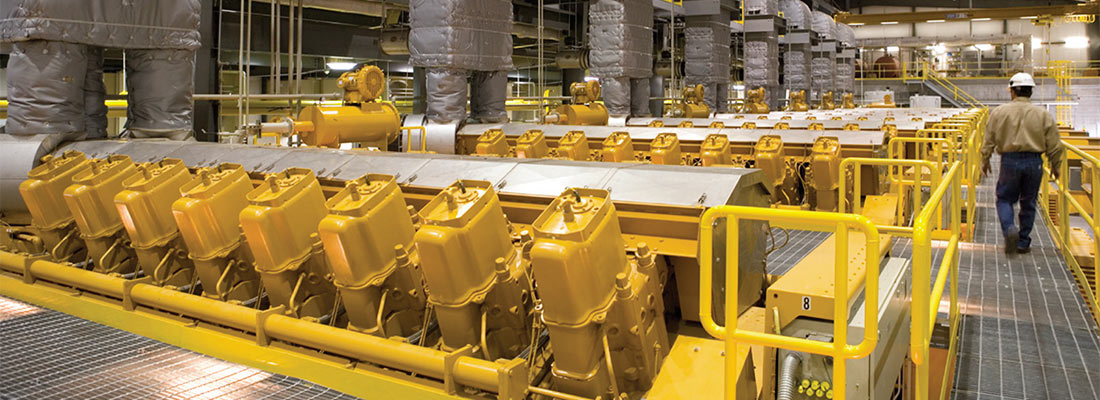Mannheim, July 30, 2020
Microgrids ensure autonomous, steady power supply that does not depend on the main supply grid. They interconnect local energy generation plants, e.g. wind power plants, solar power plants, and power plants operated with gas engines with the buildings, villages, resorts, and industrial facilities to be supplied. With these “standalone solutions”, even locations and facilities that are not connected to the national power grid can be supplied with power.
As the energy reform advances throughout Europe, microgrids represent innovative solution models for greener mobility and transformation of energy systems. Moreover, the growth of the economy and of the population requires new, intelligent energy supply structures. By using microgrids, locations and facilities can establish their own distributed power supply networks. Microgrid solutions can be custom-tailored to the respective infrastructures and requirements and provide independence from the main power network. Microgrids can also be integrated in existing networks, e.g. for emergency power supply purposes in medical facilities such as hospitals and care homes.
The next stage of the microgrid concept is the so-called “hybrid microgrid” model. Hybrid microgrids combine renewable energies from wind or solar sources with conventional diesel or gas engines. The installations make use of energy storage facilities in order to ensure uninterrupted power supply and cut energy costs. The hybrid microgrid concept thus represents an attractive option for businesses that want to implement inexpensive, reliable energy supply.
Making Full Use of Renewable Energies
The use of renewable and sustainable energies for power generation is on the rise. One of the greatest challenges associated with the power production from renewable energies, such as wind or solar energies, is their fluctuating availability. The greater the share of renewable energies in the power supply, the more susceptible the grid is to fluctuations. Hybrid microgrids enhance the stability of power supply systems. Distributed storage facilities of hybrid microgrids include batteries, flywheels, and pumped storage facilities. Additionally, the control system of the hybrid generation plant enables the adaptation of the renewable energy sources to the regional circumstances of the respective location.
Cost Savings and Steady Power Supply with Hybrid Microgrids
The procurement of inexpensive power is a challenge for communities as well as industrial facilities that do not have any access to the main supply network. Thus, they often had no choice but to use engine or turbine-powered gensets that were reliable but usually produced power at a significantly higher price than a large supply company. The hybrid microgrid concept now enables the delivery of inexpensive, eco-friendly energy for locations that lack a reliable power supply. Wind and solar energy reduce the dependence on power from gensets and thus save fuel. The generator makes use of the renewable resources in accordance with the load, and the entire system is networked by means of a digital control. Energy storage facilities improve the system economy and help the power gensets to react smoothly to substantial fluctuations in the output of the renewable resources while ensuring steady voltage and frequency.

Reliable Energy Supply with Caterpillar Energy Solutions
Hybrid microgrids are suitable for various locations and facilities, e.g. for individual buildings, resorts, mining sites, remote villages, and little islands. Caterpillar Energy Solutions has a comprehensive portfolio for distributed energy solutions, which assist companies and communities to save fuel and power costs and cut emissions. This also has a positive impact on the total cost of ownership (TCO) and ensures steady energy supply even at remote locations that are not connected to the main supply network. Caterpillar Energy Solutions offers solutions for microgrids in an output range from 10 kW to 100 MW and more and supports the energy projects through its local dealers.
